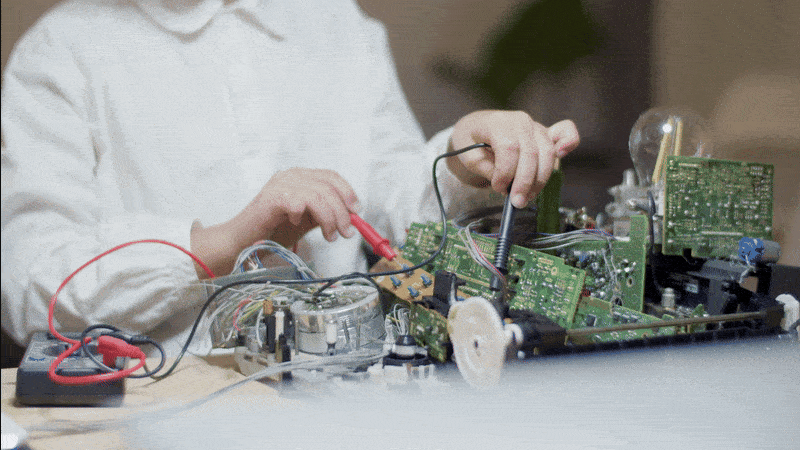The semiconductor industry plays a crucial role in today’s economy, powering everything from smartphones to artificial intelligence (AI) systems. With its rapid growth and constant innovation, it has become a sought-after field for many professionals. However, those looking to enter the semiconductor job market often face significant challenges. Understanding these semiconductor job market challenges and learning how to navigate them can greatly improve a job seeker's chances of securing their ideal position in this highly competitive industry.
Common problems in finding semiconductor jobs
Challenge 1: Highly Specialized Skill Set Requirements
One of the most significant challenges faced by semiconductor job seekers is the highly specialized skill set required for positions in this field. Semiconductor manufacturing and design involve complex technologies that require expertise in fields like electrical engineering, materials science, and physics. Job seekers may struggle to find positions that match their skills or may feel overwhelmed by the need to continuously upskill to meet industry demands.
How to Overcome This Challenge:
To overcome this challenge, semiconductor job seekers should focus on continuous learning. Pursuing advanced degrees or certifications in relevant fields, such as semiconductor physics, embedded systems, or microelectronics, can provide a competitive edge. Additionally, enrolling in industry-specific workshops and online courses can keep job seekers updated with the latest trends and technologies. Networking with professionals in the industry and joining semiconductor-related forums or associations can also provide valuable insights into the specific skill sets companies are looking for.
Challenge 2: Limited Entry-Level Opportunities
The semiconductor industry often requires candidates with significant experience, especially for technical roles. As a result, semiconductor job seekers, particularly those just starting their careers, may find it challenging to land entry-level positions. This problem is exacerbated by the industry's rapid technological advancements, making it difficult for newcomers to break into the field without hands-on experience.
How to Overcome This Challenge:
To overcome the scarcity of entry-level opportunities, job seekers should consider internships, co-op programs, or contract work. These positions can provide essential experience and allow individuals to develop the skills needed to transition into full-time roles. Moreover, semiconductor companies often recruit from their pool of interns and contractors, so these positions can lead to permanent employment opportunities. Job seekers can also look for roles in adjacent industries, such as electronics or software development, which offer transferable skills and experience that can later be applied in the semiconductor field.
Challenge 3: Geographic Limitations
The semiconductor industry is concentrated in specific regions around the world, such as Silicon Valley in the United States, Taiwan, South Korea, and parts of China. This geographic concentration means that job seekers may face the challenge of relocating or commuting to access semiconductor job opportunities. Geographic limitations can be particularly frustrating for those living in areas where the semiconductor industry is not as prominent.
How to Overcome This Challenge:
Semiconductor job seekers can overcome geographic limitations by broadening their search to include remote positions or considering relocation to semiconductor hubs. The COVID-19 pandemic has shown that many industries, including semiconductor design and development, can operate remotely. Seeking remote job opportunities or hybrid roles can help job seekers bypass geographic barriers. For those open to relocation, it is essential to research regions where the semiconductor industry is thriving and explore opportunities in those areas.
Challenge 4: Intense Competition in the Semiconductor Job Market
The semiconductor job market is highly competitive due to the increasing demand for technology professionals in this sector. Job seekers often face fierce competition from others who have similar qualifications and experience, making it difficult to stand out among hundreds or even thousands of applicants. This intense competition can result in frustration and a prolonged job search.
How to Overcome This Challenge:
To stand out in a competitive semiconductor job market, job seekers must focus on building a strong personal brand. This can include creating a professional online presence on platforms like LinkedIn, where they can showcase their skills, projects, and certifications. Attending industry conferences, webinars, and job fairs can also help job seekers expand their network and increase their visibility within the semiconductor industry. Additionally, job seekers should tailor their resumes and cover letters for each position to highlight how their skills and experiences align with the specific requirements of the job.
Challenge 5: Lack of Industry Knowledge or Awareness
For those new to the semiconductor field, one of the most common problems in finding semiconductor jobs is a lack of industry-specific knowledge. The semiconductor sector involves a diverse range of roles, from chip design and manufacturing to quality control and testing. Understanding these different career paths, as well as the technologies and processes involved, can be overwhelming for those unfamiliar with the industry.
How to Overcome This Challenge:
To address this lack of knowledge, semiconductor job seekers should take proactive steps to learn more about the industry. Reading industry publications, blogs, and research papers can provide valuable insights into the latest trends and technological advancements in the semiconductor field. Additionally, job seekers can join industry-specific forums and attend webinars or conferences to learn directly from experts. Networking with professionals already working in the semiconductor industry is another excellent way to gain a deeper understanding of the sector and its job market.
Challenge 6: Evolving Technological Demands
The semiconductor industry is rapidly evolving, with new technologies such as 5G, artificial intelligence, and quantum computing transforming the landscape. Job seekers in this field need to stay up to date with emerging technologies, as companies are increasingly looking for employees who have expertise in cutting-edge fields. The constant evolution of the industry can create a sense of uncertainty, as semiconductor job seekers may not know which skills to prioritize or how to prepare for future changes.
How to Overcome This Challenge:
To stay ahead of technological changes, semiconductor job seekers should adopt a mindset of lifelong learning. Keeping up with industry news and trends through publications, webinars, and online courses is essential. Additionally, job seekers should focus on acquiring skills in emerging fields such as AI, machine learning, and quantum computing, as these areas are expected to play a major role in the future of the semiconductor industry. Pursuing certifications or gaining hands-on experience with these technologies will make job seekers more attractive to potential employers.
Challenge 7: Cultural Fit and Company Expectations
Cultural fit is an often overlooked challenge when searching for semiconductor jobs. Companies in the semiconductor industry, particularly large organizations, have a strong focus on team dynamics and company culture. Job seekers may find it difficult to determine whether their values, work styles, and goals align with those of the company. Misalignments in expectations can result in job dissatisfaction, even if the candidate has the technical skills required.
How to Overcome This Challenge:
Job seekers should research potential employers thoroughly before applying. This includes learning about a company's culture, values, and work environment through online reviews, employee testimonials, and company websites. During interviews, job seekers should ask questions about the company’s culture, team structure, and values to ensure there is a good match. Job seekers should also be honest about their work preferences and goals during interviews to ensure they align with the company’s expectations.
Challenge 8: Economic and Market Fluctuations
The semiconductor industry, like many other sectors, is affected by economic and market fluctuations. During periods of economic uncertainty or global disruptions, semiconductor job seekers may find it harder to secure positions as companies scale back hiring or freeze recruitment. Semiconductor job seekers may face prolonged job searches or fewer opportunities during these periods.
How to Overcome This Challenge:
Job seekers can overcome market fluctuations by diversifying their job search strategies. For instance, seeking opportunities in adjacent industries, such as consumer electronics, automotive technology, or renewable energy, can provide alternative paths into the semiconductor field. Additionally, maintaining a positive attitude and being open to temporary or contract work can provide valuable experience while navigating periods of economic uncertainty.
Conclusion
While the semiconductor job market presents various challenges, job seekers who understand these obstacles and take proactive steps to overcome them can increase their chances of success. Whether it's acquiring specialized skills, staying informed about industry trends, or finding ways to stand out in a competitive job market, the key to overcoming common problems in finding semiconductor jobs lies in persistence, continuous learning, and adaptability. By taking a strategic approach, semiconductor job seekers can unlock rewarding career opportunities in one of the most exciting and innovative industries today.

Clock Gating vs Power Gating: Implementation, RTL Flow & Verification Guide
Learn how to implement clock gating and power gating with RTL design steps, backend changes, UPF flow, and a full verification checklist for efficient low-power VLSI design.
_11zon.jpg)
What to Do After Engineering? Why VLSIFIRST Leads Chip Design Careers
Discover why VLSIFIRST is becoming the top choice for engineering graduates pursuing VLSI and semiconductor careers. Explore job roles, growth, and industry-ready training benefits.

VLSI Career Roadmap for Engineering Graduates: Step-by-Step Guide
A complete VLSI career roadmap for engineering graduates. Learn skills, domains, tools, and steps to become a successful semiconductor engineer in the chip design industry.

Title: Top VLSI Career Paths for 2026 Graduates and Best Semiconductor Companies in India
Meta Description: Explore the top VLSI career options for 2026 engineering graduates and discover India’s best semiconductor companies for high-paying jobs. Learn about roles, skills, and top recruites

Why VLSI Engineers Must Care About Side-Channel Attacks, Secure Design, Verification, and Hardware Mitigation
Learn why VLSI engineers must prioritize side-channel attacks, secure design, verification, and mitigation to build trustworthy, resilient, and future-ready hardware systems.
Best Career Options For Engineering Students, Mistakes Students Make When Learning Physical Design How To Avoid, Common Industry Protocols Used In Semiconductor Manufacturing, Cybersecurity In AI Driven Automotive Systems Addressing Challenges Solutions, Semiconductor Courses Online, VLSI Online Training in Mumbai, Safety And Security Considerations In Automotive Embedded Systems, Leverage Hackathons Design Contests Physical Design, Higher Studies After Engineering, VLSI RTL Design and Verification Classroom Training in Mumbai, Future Of Physical Design Engineering Trends And Opportunities, Higher Studies After Engineering, Presenting RTL Design Project In Interviews
Hours
Copyright 2025 © VLSI Technologies Private Limited
Designed and developed by KandraDigitalCopyright 2025 © VLSI Technologies Private Limited
Designed, Developed & Marketing by KandraDigital
